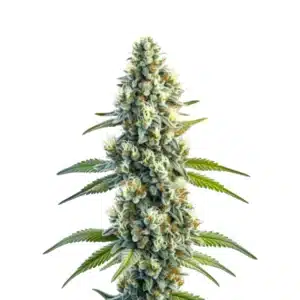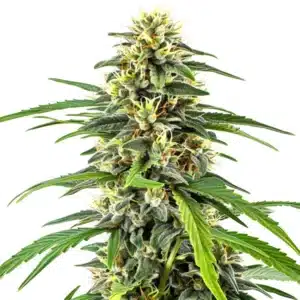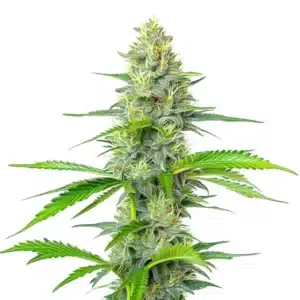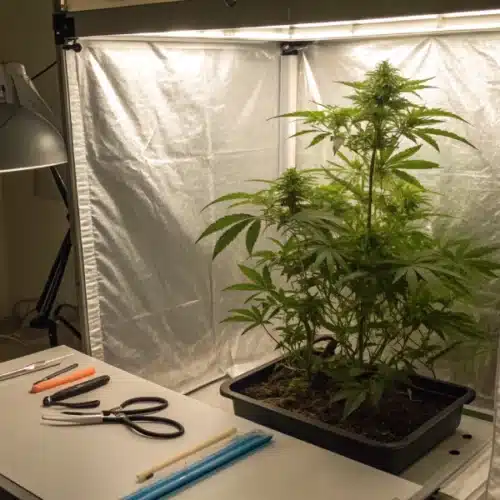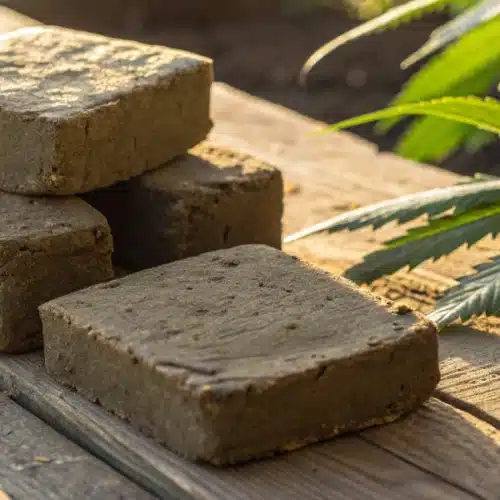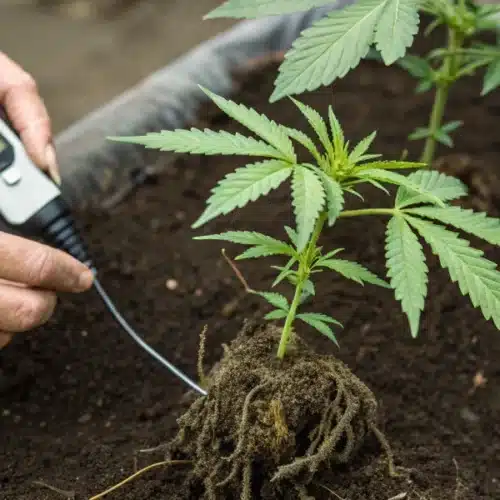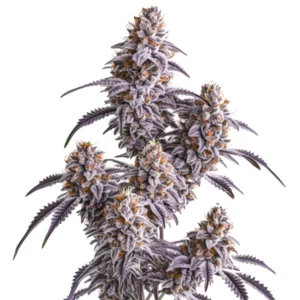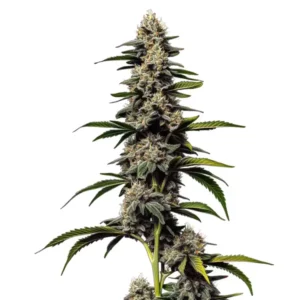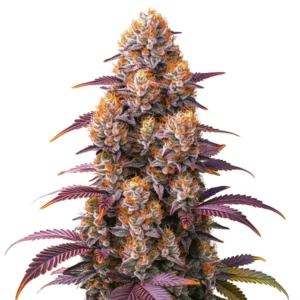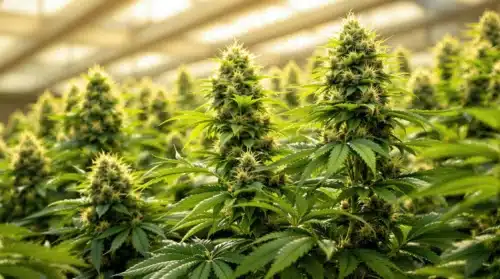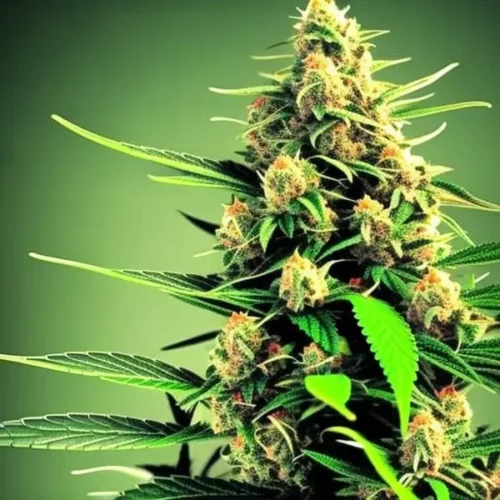Cannabis plants are cultivated for their significant medicinal properties within legal parameters. However, growing cannabis from seeds is a lengthy and complex process, with random genetic combinations creating various characteristics. Fortunately, cannabis can be propagated through cloning weed, a simpler and more efficient method. One mother plant can yield over 50 clones per week.
Cloning is an effective process for asexual reproduction of plants without seeds. Growers typically take a branch from a healthy plant and provide it with proper water, humidity, lighting, and temperature for vegetative propagation. Eventually, the clones develop their own roots and leaves. These clones are exact replicas of the mother plant, sharing the same genetic makeup and traits. Choosing the best climate cannabis mother plant is essential to ensure that the clones inherit optimal growth characteristics and resilience. Cloning offers a more stable and reliable reproduction method compared to growing from seeds. However, successful cloning requires careful attention and consideration at each step.
What is Cloning Weed?
Before delving into the essentials of cloning marijuana plants, it’s crucial to understand what cannabis clones are. A cannabis clone is essentially a small cutting from a mother plant, which can be rooted with the help of rooting hormones and a high-quality rooting medium to grow into a new cannabis plant. When you clone weed plants, the resulting plants are genetically identical to their mother plant, sharing the same genetic makeup. This genetic consistency is why many experienced weed growers use marijuana cloning to replicate the desirable traits of cannabis mother plants, such as flavor profile, expected yield, cannabinoid profile, and potency.
Promos & Deals
Why Clone Cannabis?
Before delving into the process of cloning weed, it’s essential to understand why growers opt for this method. Cloning cannabis plants provides several key benefits compared to starting from seeds:
Preserving Genetics: Cloning enables you to maintain the exact genetic profile of your preferred cannabis strains. This ensures you can replicate desirable traits, such as flavor, potency, and growth habits, maintaining consistency across each harvest.
Time and Cost Efficiency: Cloning eliminates the germination and seedling stages, saving you time and resources. With clones, you skip the initial growth phase and have mature plants ready for flowering sooner.
Crop Uniformity: Cloning cannabis plants results in genetically identical copies, leading to a uniform crop. All plants exhibit similar growth patterns and produce consistent yields, making cultivation more predictable and manageable.
Benefits of Cloning Weed Plants
If you’re interested in cloning weed, knowing its benefits can be highly beneficial. Here are some key advantages of producing cannabis clones:
Genetic Consistency: One of the primary benefits of cloning cannabis plants is the ability to maintain desirable genetic traits and ensure genetic stability across different crops. This consistency is less likely when growing weed from seeds.
Faster Growth: Clones have mature plant tissue, which leads to a quicker growth process compared to starting with seedlings or seeds. This accelerates the overall cultivation timeline.
Reduced Risk: Growing marijuana from seeds carries a level of unpredictability. Cloning significantly reduces the risk of cultivating crops with undesirable traits, providing more reliable outcomes.
These benefits make cloning an appealing method for many cannabis growers, offering genetic consistency, faster growth, cost savings, preservation of superior genetics, and reduced risk.
How to Make Clone
Let’s see a step-by-step guide on how to make your clones at home. You can get incredible plants by making clones correctly. For this reason, we share this guide with you so that you have all the information necessary to make the best clones.
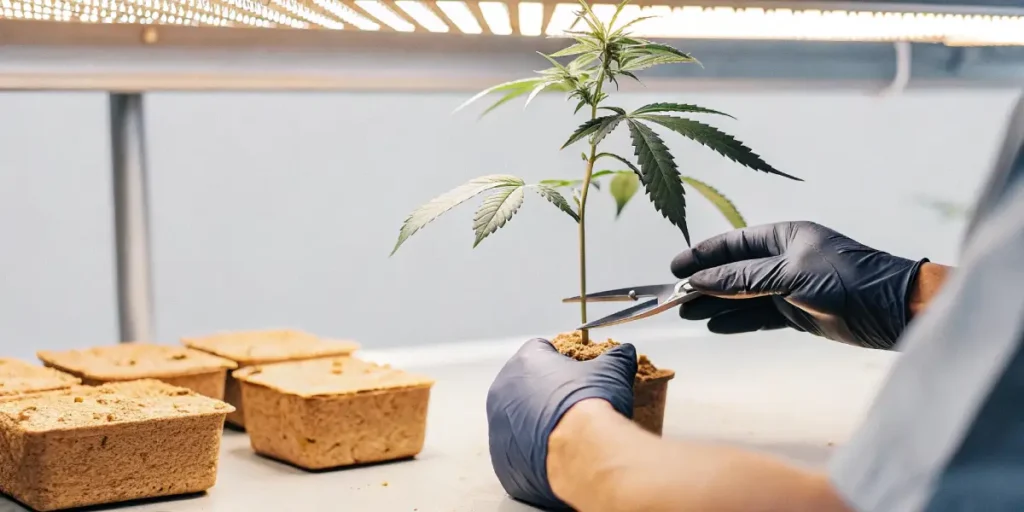
Step 1 – Choose a Healthy and Strong Mother Plant
When cloning weed, selecting a healthy and strong mother plant is crucial for successful cloning weed. The clones are exact replicas of the mother plant, so the first step is to identify the right “mother” plant. Look for nodes between branches that resemble long hair—this indicates a female plant. Ideally, choose a cannabis plant that is 4-6 months old as the mother. If you don’t have one this age, select a plant that is at least 2 months old. Hybrid cannabis varieties tend to have better resistance to pests and diseases compared to pure-bred strains, so knowing the type of plant you’re cloning can save you time and effort. Additionally, avoid fertilizing the mother plant before cloning; otherwise, the clones will focus on growing vegetation rather than developing roots.
Step 2: Pruning a Branch from the Mother Plant
Ensuring cleanliness is crucial for the health of your clones. Before making any cuts, thoroughly disinfect your scissors, razor, or knife with alcohol, vinegar, or bleach. Use sharp tools to minimize any additional damage to the mother plant. Opt for healthy, lower branches rather than top branches, as the lower branches contain more suitable hormones for cloning. Cutting from the lower parts of the plant generally facilitates easier cloning and rooting. Angling the cut at 45 degrees increases the surface area and promotes more root development. The ideal length for the cutting ranges between 4 to 16 inches. After cutting, removing large and lower leaves can enhance root growth.
Step 3 – Dip the Bottom of the Cutting in Rooting Hormone
After cutting the branch from the mother plant, immediately dip the bottom of the cutting in rooting hormone or a cup of water to prevent embolism. Embolism occurs when air bubbles block the stem’s transpiration, causing the plant to wilt. If the cut branch has been exposed to air for too long, re-cut the clone under water. This is why it’s recommended to cut a branch long enough. Use water with a pH range of 5 to 6 at room temperature for optimal growth. Rooting hormones come in gel, powder, and liquid forms. Ensure the entire cutting surface is dipped in the rooting hormone for a higher success rate in rooting.
Step 4 – Place the Cutting into Growth Medium
After covering the bottom of the cutting with rooting hormone, place it into a growth medium such as rockwool cubes, soil, or water. Gently press and tighten the growth medium around the cutting to secure it. Rockwool cubes are popular due to their excellent water and air retention and ease of use. Regardless of the growth medium chosen, avoid adding fertilizers, as they can hinder the growth of the clone and potentially burn the plant.
Step 5: Watering and Lighting the Clone
Gently water the cloning weed plant until the surface of the growing medium is evenly moist. It’s essential to keep the growing medium moist but not soggy. Spraying water on the leaves can help the clone absorb nutrients better since it doesn’t have roots yet.
Proper lighting is crucial for rooting and growth. Natural sunlight is too intense for cloning weed plants. These plants are photoperiodic, meaning their growth is controlled by light duration and intensity. Artificial LED lights are ideal for supplemental lighting because their intensity and timing can be adjusted. To maintain the clone’s rooting status, provide at least 16 hours of light per day, with 18 to 24 hours improving growth speed. LED grow lights also help control the growth process and protect clones from heat.
Step 6: Maintaining Humidity and Temperature
Maintaining the right humidity and temperature is vital for the health and survival of cloning weed plants. For the first two days, keep humidity levels high, around 95-100%, then reduce to 80-85% until the clones are ready to be transplanted. To speed up rooting, the rooting medium should be kept warmer than the ambient temperature, ideally 75-80°F (24-27°C), while the ambient temperature should be 5-10°F (3-5.5°C) cooler.
Step 7: Transplanting the Clones
After about three weeks from cutting, the cloning weed plants will have developed thick, white roots capable of absorbing nutrients and withstanding climate changes. Check the clones and remove any dead leaves before transplanting. Fill pots with soil or a soilless mix and water it. You can also add a mild liquid fertilizer. Dig holes slightly larger and deeper than the roots to bury them completely. Gently transplant the clones into the pots and cover the roots with the growing medium. Using LED lighting after transplanting helps the clones grow faster in low-light conditions.
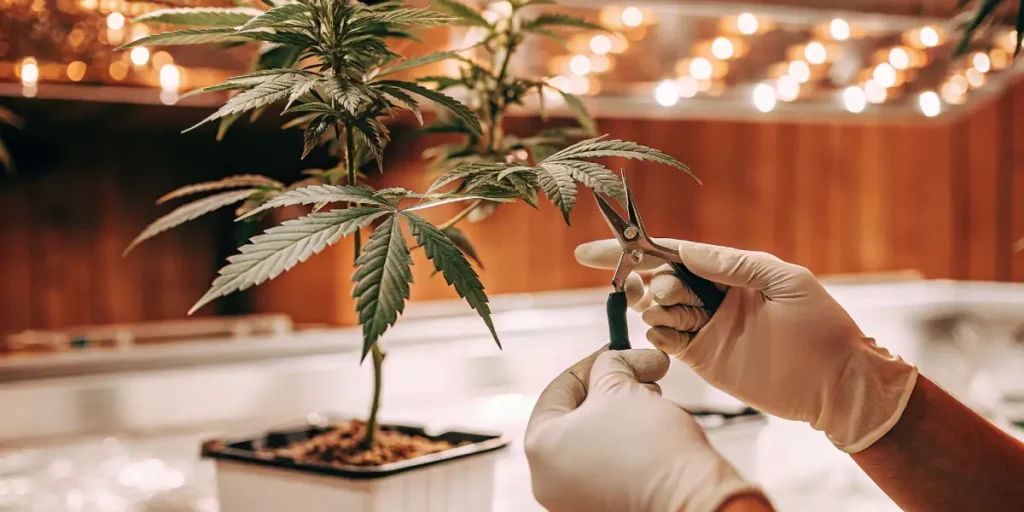
How to Select a Mother Plant for Cloning Weed
When selecting a mother plant for cloning weed, several crucial factors must be taken into account to ensure successful propagation. Here are the key considerations:
High Yield Producer
A primary criterion for choosing a mother plant is its ability to produce a large yield. Opt for a plant that consistently generates a substantial amount of buds in a single season. This trait ensures that the genetic potential for high yield is passed on to the clones, resulting in bountiful harvests.
High Level of Adaptability to External Environment
The mother plant should exhibit strong adaptability to various growing conditions. It must withstand changes in humidity, temperature, and light, and show resilience against diseases and pests. Selecting a weed plant with these adaptability traits guarantees that the clones will also thrive in diverse and less-than-ideal environments.
Age
The age of the mother plant is another vital factor. Ideally, choose a plant that is fully matured and in the vegetative stage. Immature plants might not fully display their genetic potential, making it challenging to evaluate their suitability for cloning. Conversely, overly mature plants may have accumulated genetic mutations or be nearing the end of their lifecycle, rendering them less ideal for cloning.
Do Cannabis Clones Lose Potency?
When cloning weed, one common question is whether cannabis clones lose potency. As previously discussed, clones inherit all their genetic traits from the mother plant, including potency levels. In theory, clones should maintain the same potency, but the reality is more complex. Various factors, such as environmental conditions, can cause a slight decline in the potency of clones. Changes in temperature, light, water, and nutrients can impact the plant’s development and potency. To minimize potency loss, it’s crucial to provide optimal growing conditions throughout every stage.
Over time, genetic drifts or mutations may occur. Although these changes are minimal and typically have a negligible impact, accumulated mutations over multiple generations can lead to a minor reduction in potency. Another potential factor is clonal degeneration, which some breeders believe can significantly affect potency, though this is not definitively proven.
How to Clone in Rockwool or Root Cubes
To clone cannabis in rockwool or root cubes, start by selecting a healthy plant with few fan leaves and prepare sharp, sterilized scissors or razor blades. You’ll also need rooting hormone, a spray bottle with water, and a propagation tray with a dome. Pre-soak the root cubes or rockwool in water with a pH level between 5.5 and 6.0 for about an hour. Sterilize your tools to prevent contamination.
Choose a healthy branch or stem about eight to ten inches long and cut at a 45-degree angle. Remove the leaves around the cutting, dip the bottom in rooting gel or powder if using a rooting hormone, and insert the cutting into the root cube or pre-soaked rockwool. Ensure the cube maintains high humidity without being waterlogged. Place the cubes in your propagation tray and maintain high humidity with a dome, using a gentle light source.
How to Clone in Water
For those interested in cloning cannabis in water, follow this step-by-step guide. Gather a light source, a container with distilled water, a sharp razor blade or scissors, and a healthy mother plant. Take a six-inch cutting from the mother plant, cutting at a 45-degree angle just below a node. Remove any leaves near the end of the cutting and, if using a rooting hormone, apply it at this stage.
Place the cutting in a clean container with water, ensuring one node is submerged, as roots will emerge from this area. Position the container in a spot with indirect light, avoiding harsh direct sunlight. Check the cuttings daily to keep the node submerged and change the water every few days to prevent fungal and bacterial growth.
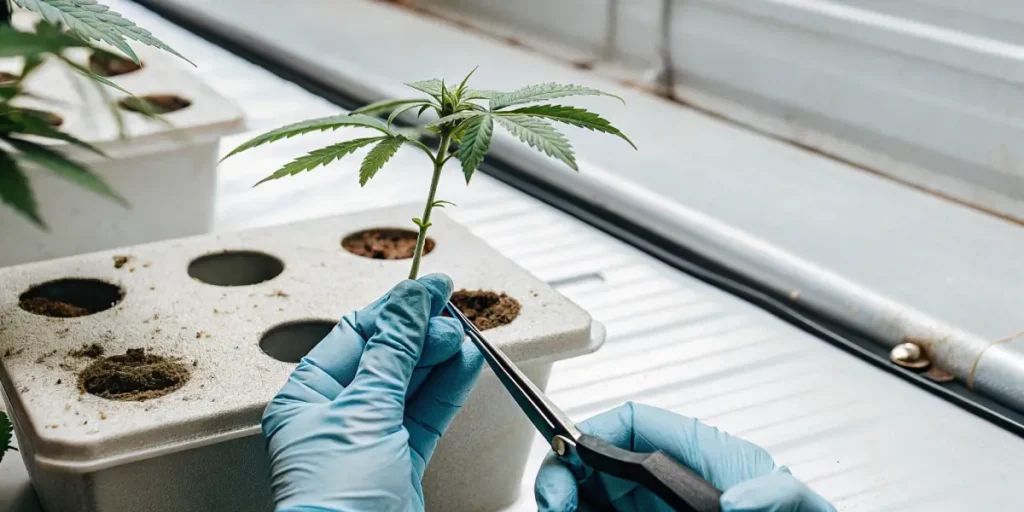
Clone Weed Transplanting
Transplanting cloned weed is a critical phase in the cultivation process, crucial for ensuring the robust development and growth of your plants. Before starting, make sure you have all the essential tools and materials: a new pot or growing space with excellent drainage, a watering system, a growing medium, and optionally, rooting hormone.
Proper timing is essential when transplanting cloned weed. The ideal moment to move your clones is when their root system is well-developed but not yet overcrowded. This usually occurs a few weeks after initiating the cloning process.
To prepare for transplanting, ensure the new growing space or pot is filled with high-quality soil, leaving ample room for the clone’s root ball. Good drainage is crucial to avoid waterlogging.
Gently remove the cloned weed plant from its original container by supporting its root ball and stem. Create a hole in the center of the new soil or pot, and place the cloned plant into it. This method supports healthy growth and minimizes stress on the plant.
Now that you understand how to clone cannabis effectively at home, you’re on your way to achieving impressive results. This guide is designed to ensure your success and help you achieve bountiful harvests from your cannabis clones. Be sure to explore our entire blog and its various sections for more in-depth information about the cannabis plant we all love.
FAQs
What is cloning weed and why is it better than growing from seeds?
Cloning weed is the process of taking a cutting from a healthy cannabis mother plant to produce a genetically identical new plant. Unlike seeds, clones skip the germination and early seedling stages, saving time and ensuring consistent traits like yield, flavor, and potency. This makes cloning a faster and more reliable cultivation method for many growers.
How many clones can you take from a single cannabis plant?
Under the right conditions, a single healthy mother plant can produce over 50 clones per week. This high output makes cloning weed an efficient option for growers looking to expand their crop without buying new seeds each time.
Do cannabis clones lose potency over time?
Cannabis clones inherit the potency of their mother plant, but environmental stress and poor growing conditions can reduce cannabinoid levels. Over many generations, minor genetic drift may also occur. To maintain potency, it’s essential to clone from a vigorous mother plant and ensure optimal care throughout the plant’s life cycle.


